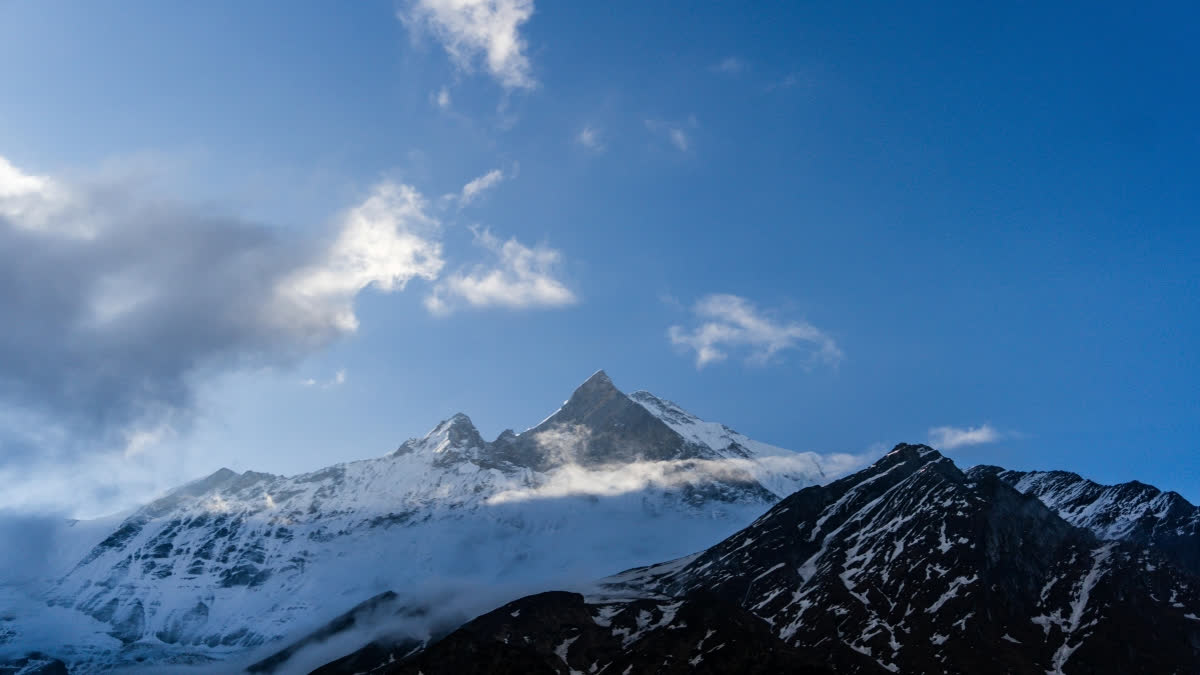The Himalayas, often referred to as 'Heaven on Earth', hold great significance in India's natural beauty and cultural heritage. This mountain range holds significance in geography, as well as in biology and culture.
The Himalayan Range spans 2400 kilometres from west-northwest to east-southeast, with Nanga Parbat in the west and Namcha Barwa in the east as its anchors. The Northern Himalayas are surrounded by the Karakoram and Hindu Kush mountains. The Indus-Tsangpo Suture acts as a boundary, stretching 50 to 60 kilometres wide, dividing it from the Tibetan Plateau in the northern direction. The Himalayas are situated opposite the Indo-Gangetic Plain in the south. The Himalaya spans from 350 kilometres wide in the west to 150 kilometres wide in the east.
History of Himalaya Day: Himalaya Day was started in 2014 by Harish Rawat, the then Uttarakhand's Chief Minister, to celebrate the Himalayas. Anil Joshi and other Indian environmentalists developed the idea, hoping to bring together people from all Himalayan states for a day of appreciation for their shared environment. The date, September 9th, was chosen, possibly because of natural disasters like the 2010 monsoon floods and the 2013 Kedarnath disaster, which highlighted the need to protect the fragile Himalayan ecosystem.
Importance of Himalayas: The Himalayas serve as a crucial lifeline not just for India but for the entire South Asian region. This mountain range is the birthplace of India's major rivers—Ganga, Yamuna, and Brahmaputra—which are essential for the survival of millions. The glaciers in the Himalayas provide the rivers with water, earning them the nickname 'source of water conservation'.
Beyond its geographical significance, the Himalayas hold a unique cultural and spiritual value. Places of pilgrimage such as Badrinath, Kedarnath, Amarnath, and Kailash Mansarovar are revered as sacred sites in Hinduism. Additionally, the Himalayas are home to a vast array of plant and animal species, many of which are of scientific and medicinal interest.
Himalayan challenges: The Himalayas are beautiful but face big problems like climate change, melting snow, illegal mining, cutting down trees, and excessive city expansion. These issues are harming the environment, changing snow patterns, reducing glaciers, affecting river water, causing floods and droughts, harming wildlife, and stressing natural resources due to too much tourism.
Actions taken to preserve the Himalayas: A key aim of celebrating this day is to recognise the significance of the Himalayas and take necessary steps to preserve them. This effort involves not just the government and non-governmental organisations but also local communities in the preservation of the Himalayas.
Actions taken for the conservation of the Himalayas include planting trees, efforts to lessen the effects of climate change, promoting sustainable tourism, and developing strategies in partnership with local communities. Numerous initiatives are also being implemented by the Indian Government, to preserve the natural environment of the Himalayan area.
Facts About Himalayas:
- The Himalayas, which cover an area of about 4.2 million square kilometres and hold the most snow and ice after the North and South poles, are also regarded as the Earth’s third pole.
- The Himalayas are the world’s youngest mountain ranges, dating back around 70 million years.
- Mount Everest, the highest peak in the Himalayas in the globe, is covered with snow that never melts.
- The world’s youngest mountain range is still growing at a pace of around an inch each year as continents continue to shift, pushing India further north.
- Himalayas feed 20 per cent of the Earth’s population.
Himalaya Diwas highlights the significance of the Himalayas as a cultural, religious, and vital natural resource. It emphasises the need for collective action to preserve these mountains for future generations.
The day encourages us to be mindful of our environment and take steps to protect our natural resources. It's not just important for those who live in hilly regions but also sends a global message about the importance of environmental conservation.




